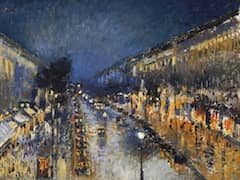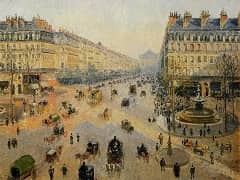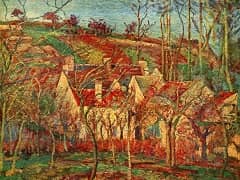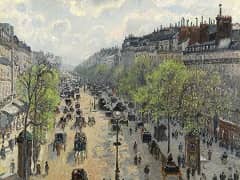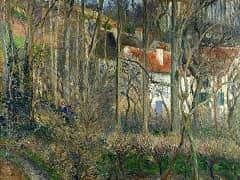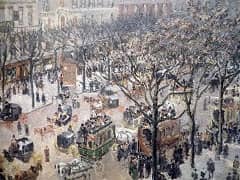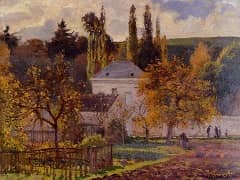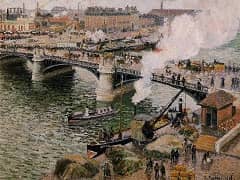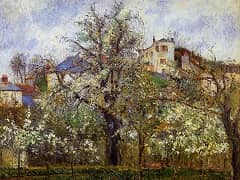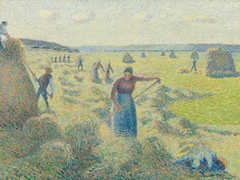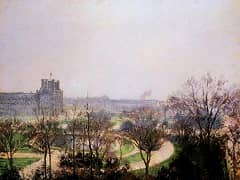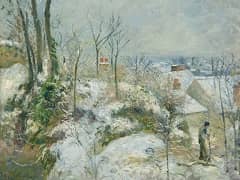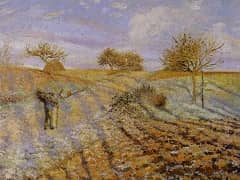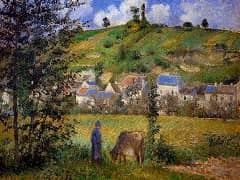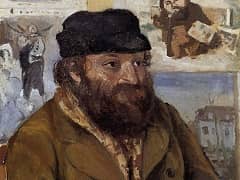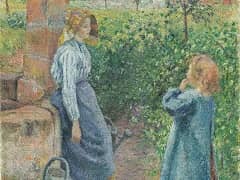The Little Bridge Pontoise, 1875 by Camille Pissarro
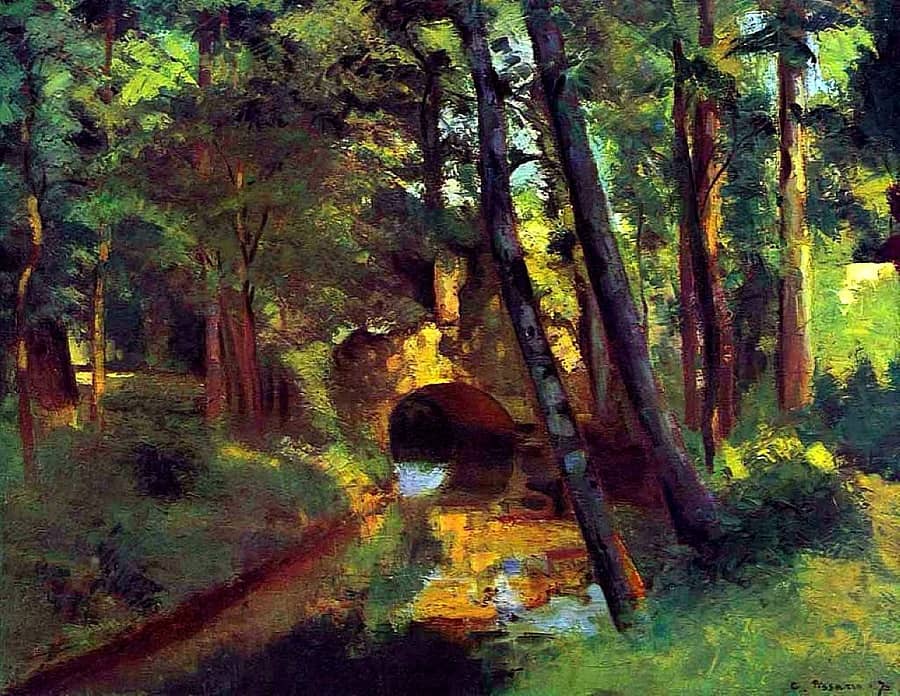
Whereas Monet and Sisley tended to scour the countryside searching for a suitable view or composition, Pissarro generally chose systematically to record the landscape that
surrounded his home. He appears to have depicted almost every aspect of the area, and to such an extent that his representations of Pontoise are rather like the concentric circles made by a stone when it hits the water's
surface. Nevertheless, his pictures were not always without social comment.The countryside around Pontoise was littered with large houses and chateaux belonging to the haute bourgeoisie whom Pissarro held in complete
contempt. Although he painted the grounds and surrounding landscape, he took great pains not to depict the buildings themselves.
The bridge in this painting stood in the grounds of the Chateau de Marcouville. By calling it simply The Little Bridge, Pissarro has chosen to avoid any suggestion of the grandeur associated with the chateau. It seems
logical to ask why he should have depicted a scene which made it necessary for him to venture into the social territory he abhorred. It is possible, and indeed probable, that he was experimenting on a theme established
by Gustave Courbet in the 1860s. Courbet's The Shaded Stream, 1865 Courbet has similarly depicted water running
through the dense undergrowth of a dark forest. In his own painting, some ten years later, Pissarro recreates a very similar setting and feel also using a palette of subdued greens and browns, applied in typical Courbet
style with a knife rather than a brush.
It appears therefore that Pissarro's choice of subject could be dictated by the availability of a suitable site. It is possible that in the generally open and agricultural land around Pontoise this wooded area in the
Marcouville grounds was the only spot where he could recreate the essential elements of Courbet's paintings.

